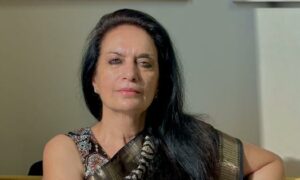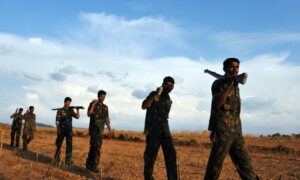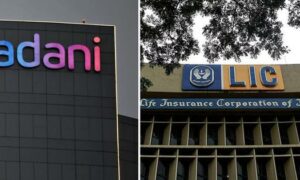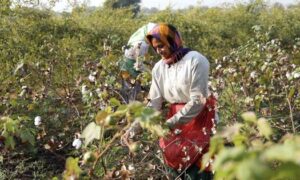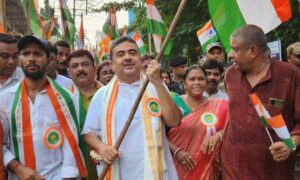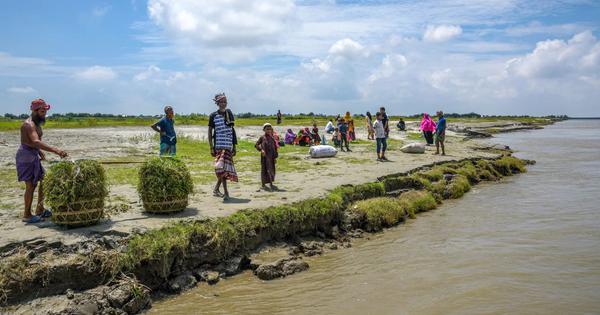
This article was originally published in Rest of World, which covers technology’s impact outside the West.
Farmers on Jamira, a tiny island on Bangladesh’s flood-prone Jamuna River, are used to warring with the river that’s eating their land.
Next year, they’ll have one more weapon in their arsenal: cash payments from the international nonprofit GiveDirectly delivered days before a flood hits. The group uses Google’s artificial intelligence-based flood forecasting to identify at-risk villagers.
This flips the traditional humanitarian model – where aid is delivered to entire regions after a flood – on its head. GiveDirectly offers support before disaster strikes, using AI to pinpoint the villages likely to be affected.
“Our goal is to test whether timely support in the form of unconditional cash transfers enables families to act on early warnings and reduce the impact of flooding,” Abir Ahmed Chowdhury, the country director of GiveDirectly in Bangladesh, told Rest of World. Unconditional cash transfers means the farmers are free to use it how they want, without restrictions.
Humanitarian groups delivered over $1 billion in unrestricted cash to people in need in 2024, according to the United Nations. Finding the best ways to deliver the money has been an area of keen research.
Studies show that cash transfers to farmers can increase investment in livestock and farm assets, and boost savings. In pilots across Africa over 15 years ending 2015, farmers used the money to purchase cows and goats, tools such as sickles and hoes, and inputs like seeds.
Now, a question in humanitarian circles is whether it’s better to receive assistance even before disaster strikes.
“There’s a need to have more scientific evidence to prove the effectiveness of early cash in people’s hands,” Federico Barreras, humanitarian manager at GiveDirectly, told Rest of World.
Barreras’ team has planned a randomised trial for 2026 in Gaibandha and surrounding regions in northern Bangladesh, covering over 100,000 families, including the farmers on Jamira island.
Affected households would receive 10,375 Bangladeshi taka ($85). The project is partly funded by Google’s philanthropy, Google.org.
Some families would get cash before the flood, some after. A third group would receive only a flood warning, and a fourth, no intervention. Barreras expects the early-aid group to fare the best “because they have been able to protect their livestock and their livelihood.”
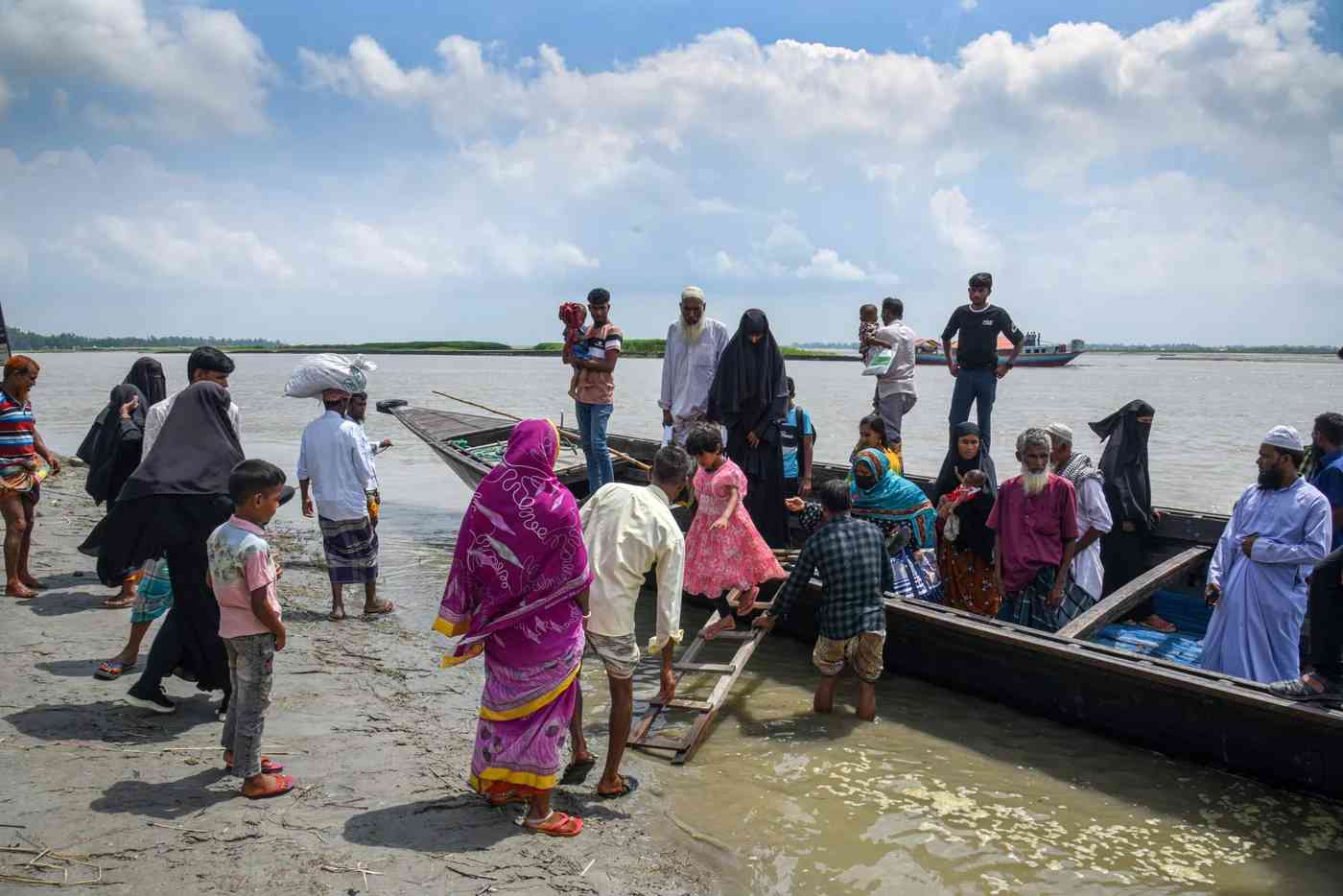
Idris Mollah farms leased land and raises two cows on Jamira, an unelectrified island where few people own smartphones. There are no roads, only mud paths for walking.
Mollah said the weather has become unpredictable. The island usually floods between July and September during the southwest monsoon – but not this year. Expecting rain, Mollah and his neighbors held off planting crops this summer.
As the season ended and the skies stayed dry, some farmers planted lentils and paddy in early September. Then unusually heavy rains submerged the crops.
“I hoped for a good crop. But … the fields are under water, and I don’t know what I’ll be able to save,” Mohammad Anisur Rahman Sujan, a 39-year-old farmer in Jamira, told Rest of World. Sujan is 550,000 taka ($4,435) in debt due to this year’s unruly weather.
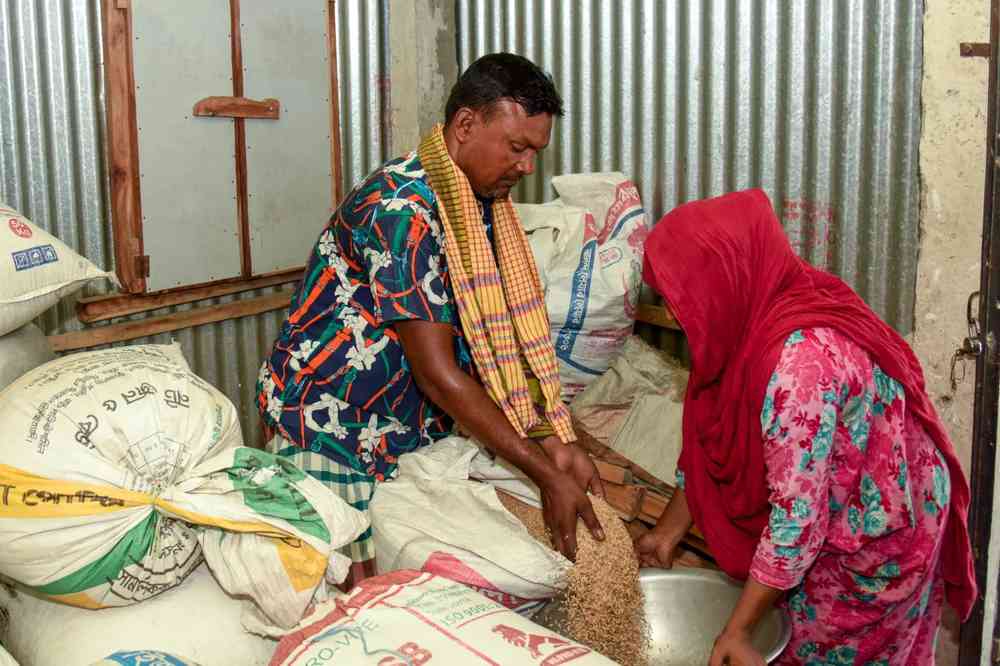
A nation of many rivers, up to a quarter of Bangladesh inundates every year from seasonal floods. Historically, predictable floods have helped farmers’ crops, but with climate change, studies show the timing of the monsoon and related flooding have become erratic, with immense economic damages. Floods in August 2024, for instance, affected 6 million people and cost the nation an estimated $1.67 billion, according to the World Bank.
Bangladesh is one of the most vulnerable countries to climate risks ranging from floods to cyclones and sea level rise, according to a top UN panel of scientists. Riverine floods in some parts of the nation are projected to be more intense and frequent in the future.
That makes accurate and early forecasting critical. At the moment, farmers on riverine islands rely on fragmentary warnings to survive. Mollah said that NGO workers sometimes provide updates, or he hears from neighbors. Experienced farmers predict floods by observing the river’s current. Others look at a pole planted on the edge of the Teesta river, marked with green, yellow, and red lines to indicate rising levels of danger. Occasionally, Mollah will cross the river to watch the news on a friend’s television for warnings from government agencies.
The Bangladesh Flood Forecasting and Warning Centre uses a model that combines weather forecasts with measurements from a dense network of river gauges and satellite images to forecast water levels in rivers three days ahead of time.
These short-term warnings give families limited time to collect hay for animals, harvest crops, move chickens and goats to higher ground, and store dry foods like chira, beaten rice, and muri, puffed rice.
Google’s AI-based Flood Hub provides warnings five days in advance, even in river basins that don’t have streamflow gauges.
Unlike traditional flood forecasting models, such as the gold-standard GloFAS, the Global Flood Awareness System, the Flood Hub doesn’t model the world informed by physics. It instead uses AI to learn patterns from current and historical hydrological and meteorological data to issue forecasts for river basins in over 80 countries. Its performance is comparable to that of GloFAS, according to Google researchers.
In Bangladesh, GiveDirectly plans to cross-check forecasts with river gauge measurements from the country’s flood warning system. It would pass on the warning to farmers four days in advance.
For its pilot, the group used Google’s historical flood data to map flood-prone areas and combined this with socioeconomic data, such as wealth and road access, to identify which villages to target. When more than half of a village is forecast to flood, the team begins its assistance.
The nonprofit previously trialled a similar project in Nigeria’s Kogi State, where it handed out early cash to 4,463 people before floods in August 2024. Many invested in improving their farms and buying seeds, the trial found.
In a separate pilot by the International Rescue Committee in 2022, Nigerian farmers who received early cash bought more farm inputs and animals than those who received later aid. They also diversified their income by migrating for work.
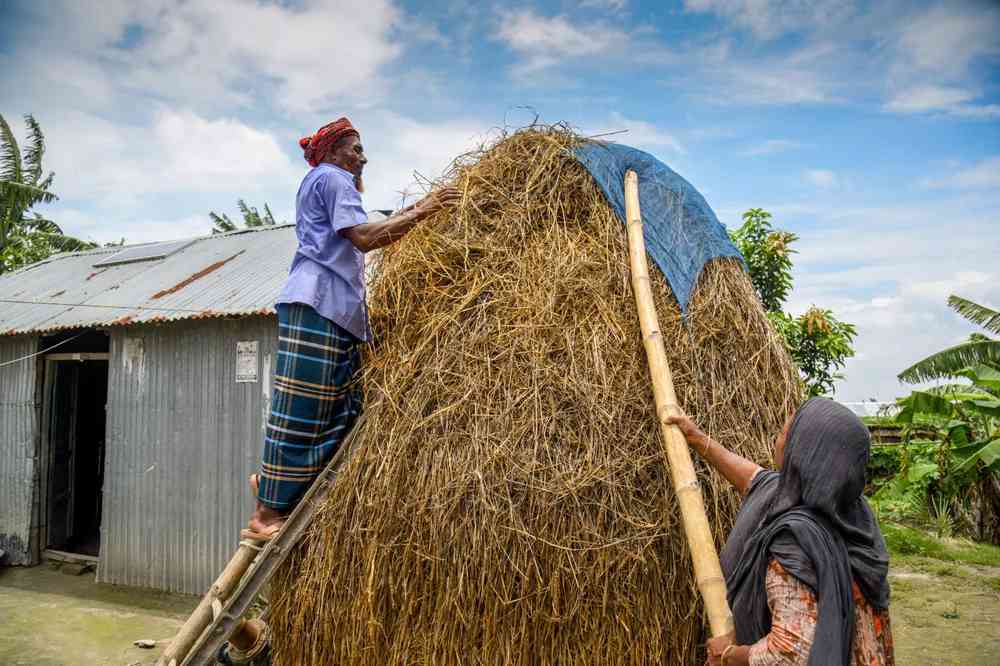
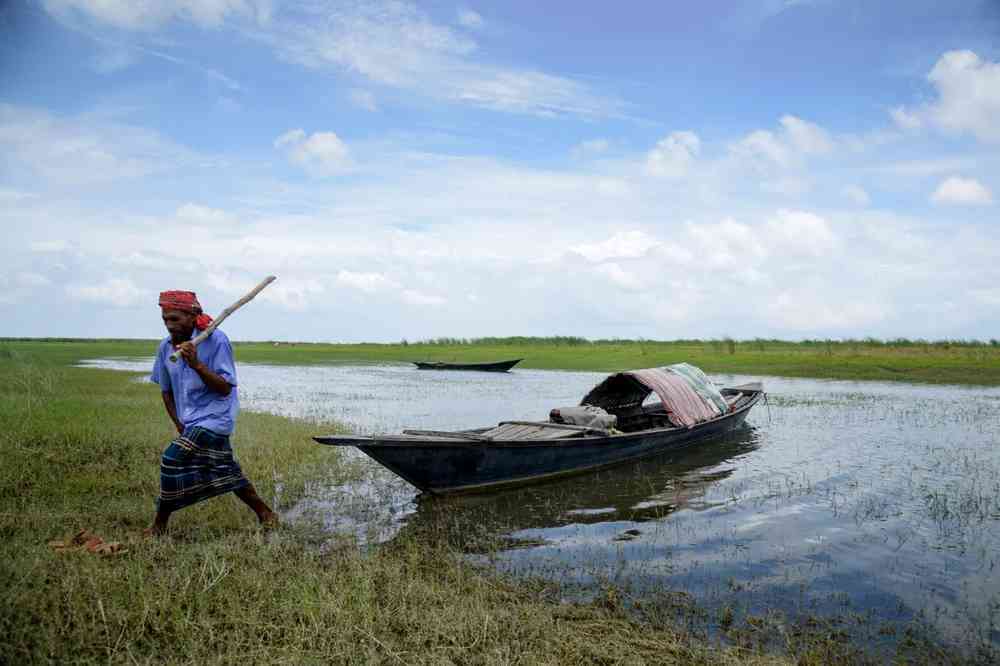
Farmers in Jamira told Rest of World they would also invest in their livelihood if they got money. Many said they would buy more cattle or goats. Others said they would buy hay and medicine for their animals, or hire laborers to quickly harvest crops before they are submerged.
“If I get money, I’ll buy one or two goats and some essential food items. By raising the goats, I hope to buy a few more in the future,” Sujan said.
Receiving earlier flood forecasts is welcome, but it is the cash from GiveDirectly that’ll make a difference, Mollah said.
“If I get money from GiveDirectly before the flood, I will be able to store food and arrange strengthening my house for my family and cow,” he said. “But if I only get a forecast, I will discuss it with my family and neighbors and do what I can.”
Jesmin Papri is a Labor x Tech reporter based in Dhaka, Bangladesh.
Gayathri Vaidyanathan is the Labor x Tech editor at Rest of World based in Stuttgart, Germany.
This article was originally published in Rest of World, which covers technology’s impact outside the West.
📰 Crime Today News is proudly sponsored by DRYFRUIT & CO – A Brand by eFabby Global LLC
Design & Developed by Yes Mom Hosting

